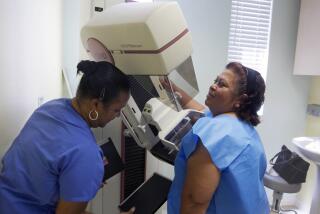Where mammograms fit
Early detection of breast cancer improves the odds of survival; mammograms save lives, and annual exams are essential for women over 40. That has been accepted wisdom for the last 20 years, and until recently, results seemed to confirm its truth. Since regular screening became standard in the 1990s, the mortality rate for breast cancer has dropped 30% in the United States.
That conventional wisdom was challenged last year when a federal task force suggested that women 50 and over should have mammograms only once every other year and that younger women need not bother at all. Now a Norwegian study published in the New England Journal of Medicine has set off another round of controversy by suggesting that the benefits of mammography are exceedingly modest. The study found that annual mammograms in conjunction with comprehensive treatment reduced the mortality rate in women by only 10%, and that mammograms alone reduced it by as little as 2%. Previous studies had found that regular mammograms reduced the death rate by up to 25%.
The new findings come at a time of heightened concern among policymakers about the cost-benefit ratio of healthcare. And the statistics are often more confusing than clarifying for women trying to determine the safest course of action. Deaths, for instance, have been falling 2% a year since screening became routine, but the incidence of breast cancer has risen by 30% in Western countries ŌĆö due in part to cases found by increased screening. White women have the highest incidence of the disease, but African American women, who often are diagnosed later, are more likely to die from it. Breast cancer is a leading cause of death among Latinas; overall, 192,000 American women are expected to be diagnosed with the disease this year, and about 40,000 will die of it.
So should millions of women continue a costly annual ritual whose effectiveness may be diminishing? Not surprisingly, the answer is nuanced. That early detection is no longer the key to surviving breast cancer is actually good news, according to some oncologists. When treatment improves, detection plays less of a role in outcomes. The new study should not be read as a call to retreat from mammography. Rather, it should inspire further investigation, more comprehensive treatment for patients similar to the Norwegian model and screening tailored in a way that is most effective for the individual.






